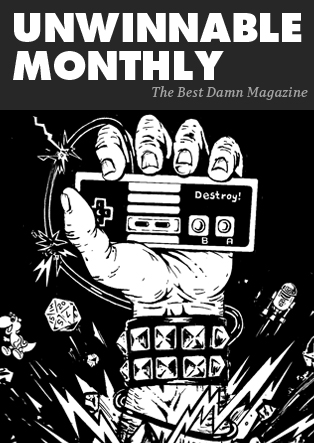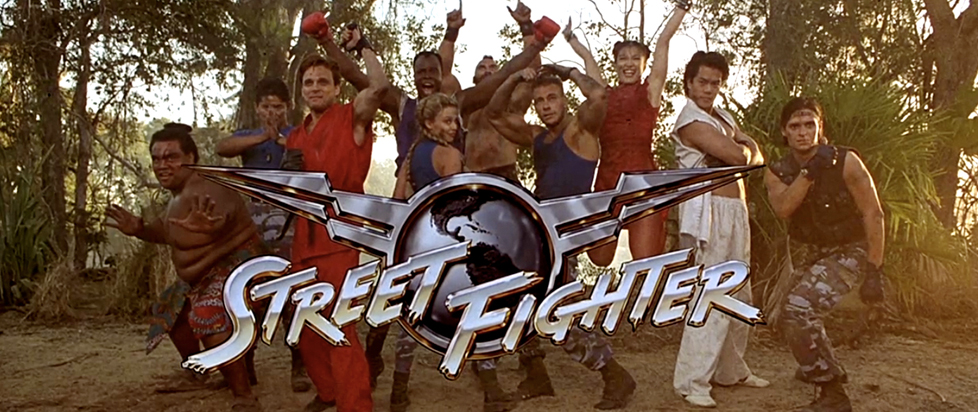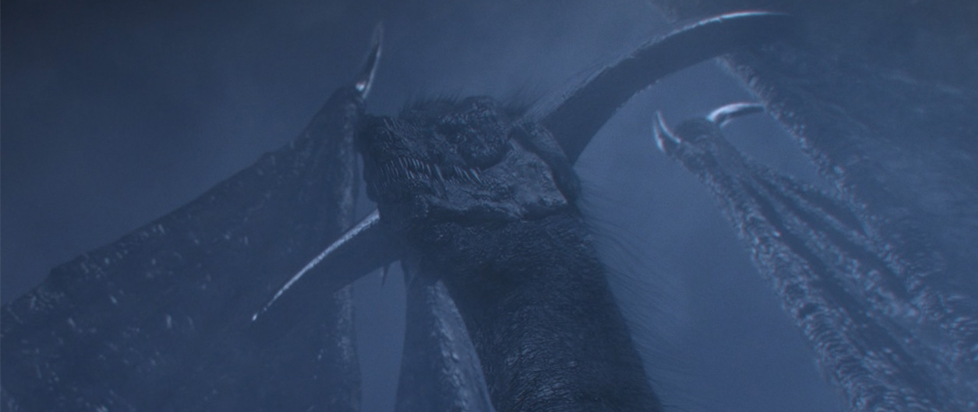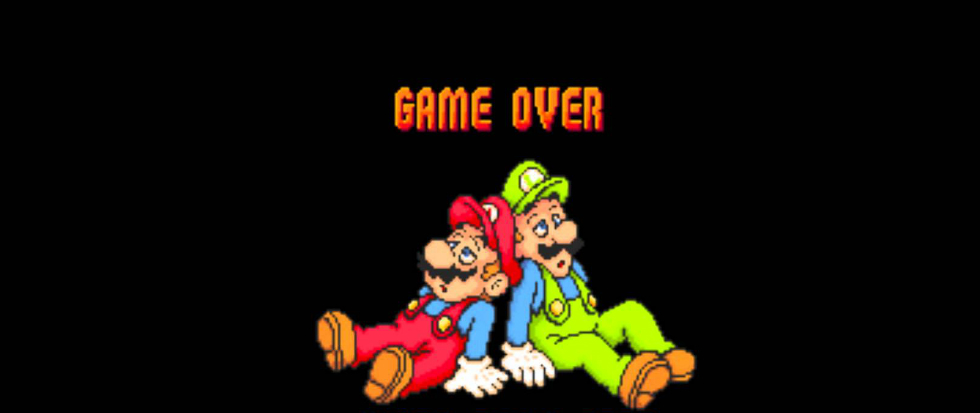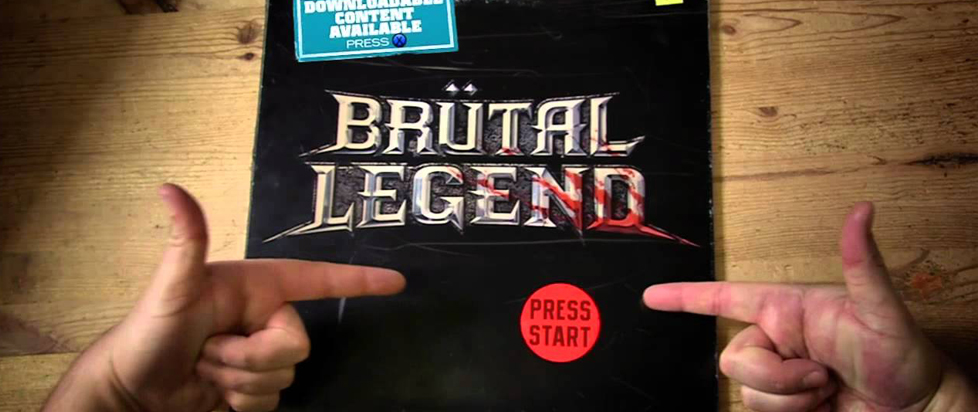
Nostalgia²
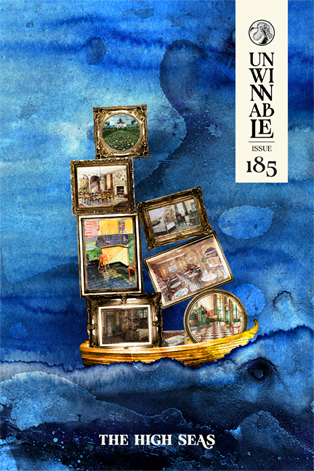
This column is a reprint from Unwinnable Monthly #185. If you like what you see, grab the magazine for less than ten dollars, or subscribe and get all future magazines for half price.
———
Analyzing the digital and analog feedback loop.
———
It’s gone. The world you want to keep living in, it’s most certainly gone.
The time, the place, even the atmosphere (both environmentally and emotionally) no longer exists. This is just the facts. Games and their fictional spaces help you uphold your personal fictions of who you used to be or where you used to reside. Especially games you played growing up. Not just any games though – the ones that became a part of your everyday communication, the frames of reference that keep you in a tenuous state of coping with your present. The relentless onrush of data and how it often conspires to dysregulate your body’s system.
System . . . something both mundane yet cliche yet seemingly obvious. Games and their digital worlds, like ours, operate within many interlocking systems, often oppressive to those on the margins of said systems. Down with the systems. Or perhaps up with the systems, for those who are the beneficiaries. Number goes up after all, if you exist at the “right” intersection of capitalist imperialist patriarchal society. In theory.
The time and space of game worlds are idiosyncratic to the eras of development those games are from. Iteration is the lifeblood of game design, but we’re often in need of reminders that actual flesh and blood workers are behind that iteration. As a result, the way game worlds deal with time and space and how we interact with both, is characteristic of past aesthetics and ethos. This aspect of play may sound self-evident too, but is it really? We still witness some of the most intense arguments in games’ discourse about what game design features should remain the same.
But there’s another wrinkle to this that I feel is often neglected: we know these arguments are so passionate because the people who make them are nostalgic not just for the time they first encountered Dark Souls’ system. They are nostalgic for the encircling context that made the experience of that system feel ideal and precious to them. The room and time of day they first assumed the role of a Chosen Undead. Who they perceive is worthy of assuming that role and then bragging about their performance of that role in gatekept online and public forums.

There’s a curious folding of time and space, or at least our personal perception of time and space when it comes to ludic memory. This folding is caused by the dynamics of simultaneously existing, temporally, in multiple realities. Sometimes this folding even takes on extrasensory-like qualities, if we are (grits teeth) immersed enough in our playing experience. We could also liken this experience to what philosopher Timothy Morton defines as tuning or attunement in their argument for bringing more ambiguity into ecological thoughts about art and design. Tuning is when you are aware that you are relating to non-human beings or things not for any particular cause or reason. Tuning also acknowledges that things are also interrelated with you (bodily) and your existential being, which isn’t as separate from non-human existence as traditional philosophy would have you believe.
I wrote recently on how stillness is necessary and valuable in games because it allows us time to just be. Games can inspire us to mimic actions we’ve taken in games, but I’ve also previously spoken on how games can make us feel like we’re embodying certain kinds of agency even if in reality all we’re doing is sitting on our ass and giving electronics input of various kinds. There are exceptions like dance and fitness games, as well as VR in certain instances. But mostly we’re just pressing buttons, clacking keys or waving motion-sensitive controllers about. The TL;DR is that games give us intense memories, both physical and emotional, whether we’re giving active or passive input.
Both poets and games studies researchers are aware of another related phenomenon writers at Unwinnable have touched on many times before – being more cognizant of your context and surrounding environment which frames your play sessions, than of the actual experience of play itself. Stephen Sexton’s long poem, If all the world and love were young, which is concerned with how playing games at his childhood home growing up helps him memorialize his late mother, is often concerned less with the specific pixelated signifiers of Super Mario World and more with the unique sensory perceptions he remembers of that game world.
Sexton’s digital reality experiences are folded onto his organic experiences in local settings that evoke similar emotions and embodied memories of time and place. A good third or so of the long poem is also a eulogy of sorts for the now vintage technology that mediated his game memories in a way that is rooted in his childhood years.

Except games are not necessarily “rooted”, so to speak. We’re currently seeing a series of remasters and ports that make us aware of just how perceptually ambiguous games are, despite being created in specific eras. Some games are polished up and their mechanics are revised. Others are merely dusted off and made available. Regardless of how these games are brought back, however, there’s still a cultural residue that’s difficult to fully edit out. Brutal Legends’ title sequence with Jack Black giving a tour of a vinyl records store and the game’s opening scene sardonically lamenting the loss of the metal and classic rock era to early noughties’ emo-pop rock are good examples of this.
I think what I’m trying to get at is that nostalgia can be fantastical and terrifying at once. It’s a force that can help people orient how they want to enact the agencies they have learned how to mimic from games they have attuned to. As I’ve recounted in an earlier discussion in my column, a game inspired me to enact acrobatics that resulted in me breaking a limb. The medium can be powerfully suggestive because it’s resonant with both our physical selves and our temporal selves. Both our past and present idiosyncrasies are constantly entangled in ludic memory. Just as games as both objects existing in our past and present contexts and digital representational spaces are doubly nostalgic.
Nostalgia burgeons as this pandemic persists and can be an impetus for positive or punitive action, as one recent study posits. As I move forward with this column, I want to observe more of these instances of our attunement to games. How as players we often overlook the fact that as abstract as games may seem as media, influence our everyday physical worlds. I keep catching glimmers of something caught in the interconnection between technology–which is more bioengineered than we give it credit for and ourselves–which as Morton states are much more ambiguously categorized because of our vital symbiotic relationships with non-humans and things. We live in a world where the growth rate nostalgia is seemingly exponential and its effects, as well as its affects, are cultural drivers. For good and ill.
———
Phoenix Simms is an Atlantic Canadian cryptid who is a freelance writer and the co-editor of The Imaginary Engine Review a.k.a. TIER. You can lure her out of hibernation during the winter with rare SFF novels, ergonomic stationery, or if all else fails, gourmet cupcakes. Or you can just geek out with her where skies are blue.
